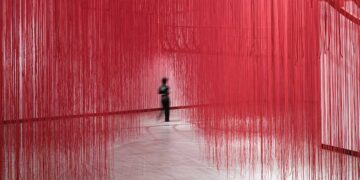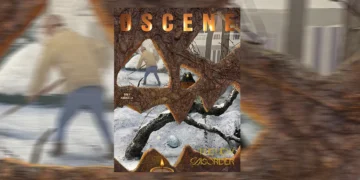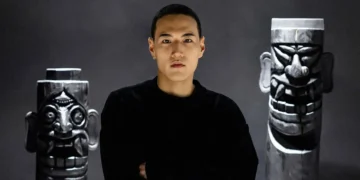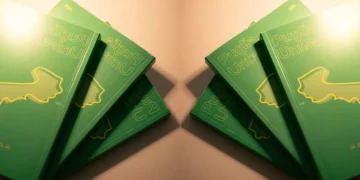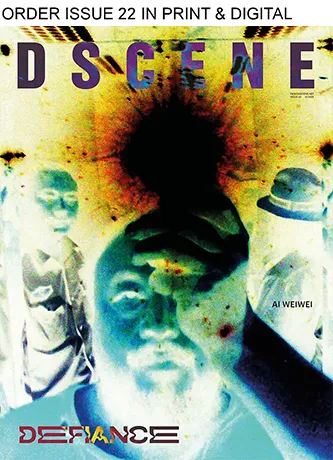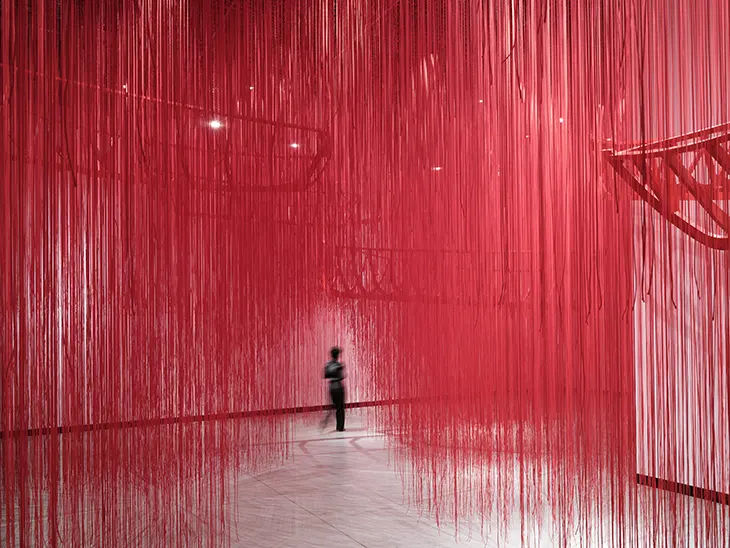
Chiharu Shiota, the internationally acclaimed Japanese artist known for her powerful thread installations, brings her work to Prague for the first time with the exhibition “The Unsettled Soul” at Kunsthalle Praha. Running from November 28, 2024, through April 28, 2025, the exhibition explores the core themes of the human condition—life, death, and memory. Shiota has showcased her installations at prestigious institutions around the world, including the Hammer Museum in Los Angeles, Gropius Bau in Berlin, and the National Museum of Art in Osaka. In 2015, she represented Japan at the Venice Biennale, establishing her unique approach to installation art. With “The Unsettled Soul,” Shiota transforms the gallery spaces of Kunsthalle Praha, inviting viewers to experience her web-like environments that explore the invisible threads connecting people, places, and moments. Her art invites a reflection on the fragility of human relationships, drawing audiences into her dreamlike worlds where the tangible and intangible intersect.
Прикажи ову објаву у апликацији Instagram
At Kunsthalle Praha, Shiota presents four major installations, each inviting viewers to reflect on the invisible connections that bind people, places, and histories. Her use of thread serves as a metaphor for the relationships between individuals, as well as the connections across cultures and generations. Each installation encourages visitors to engage with the work on an emotional level, finding resonance with their own memories and experiences.
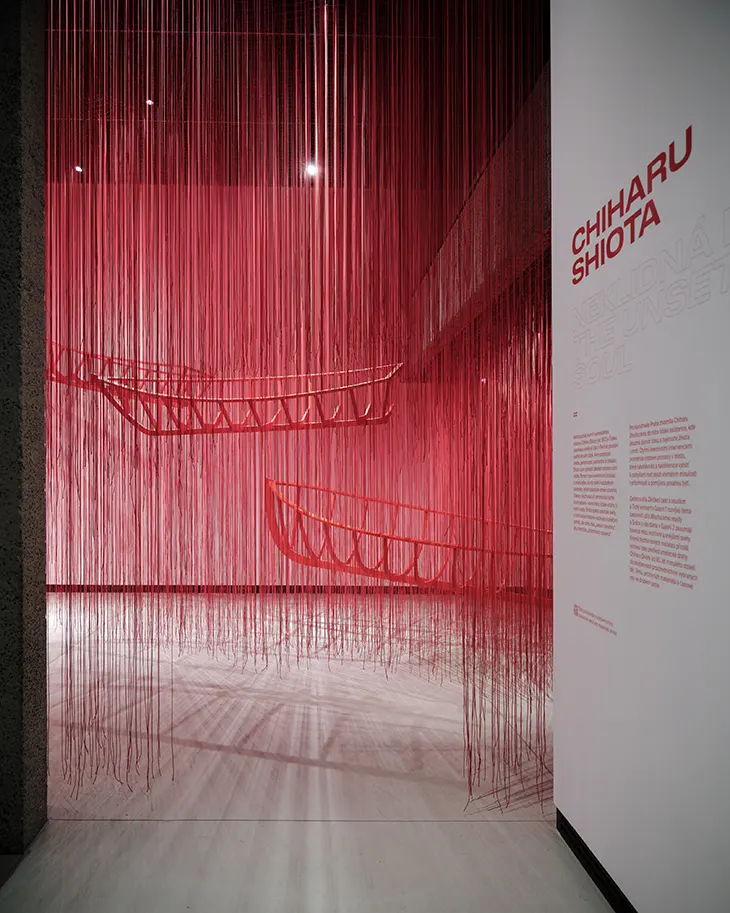
The exhibition’s title, “The Unsettled Soul,” captures the sense of exploration that pervades the gallery spaces. In one installation inspired by Prague’s Vltava River, Shiota uses flowing threads to symbolize the river’s connection to the rest of Europe—a metaphor for the interconnectivity of people and stories. The Vltava, Czechia’s largest river, becomes a symbol in Shiota’s narrative, representing the passage of time. The installation creates a visceral experience for viewers, as the threads seem to flow and pulse like water.
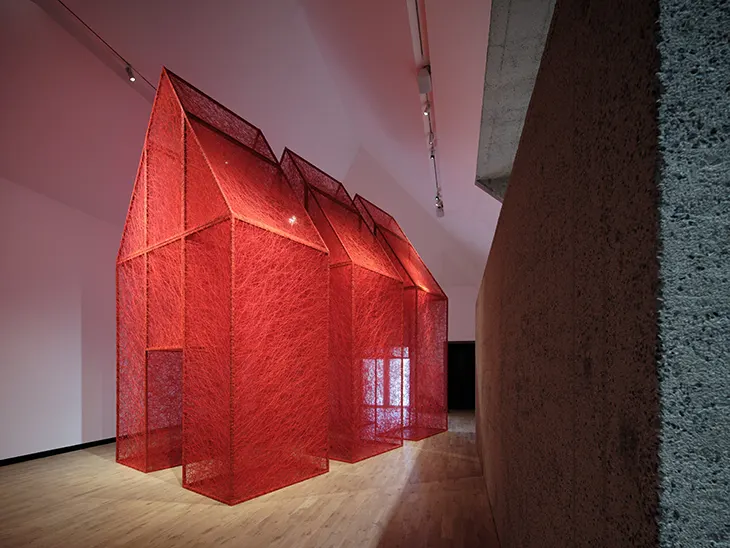
Another striking installation in the exhibition centers around the idea of home. Having lived between Japan and Germany for much of her life, Shiota often grapples with the concept of belonging and displacement. The experience of navigating two very different cultures has profoundly influenced her identity, leaving her in a state of being “in-between” places. This tension is reflected in her art, where the sense of home is depicted as both a physical and emotional space. In this work, red threads are woven through metal structure shaped like s house, creating a complex web of connections that evoke the bonds of family. The red threads—often symbolic of blood ties—suggest a sense of unity and kinship, but also the complexities of living between different worlds. The installation captures Shiota’s personal experience of cultural duality.
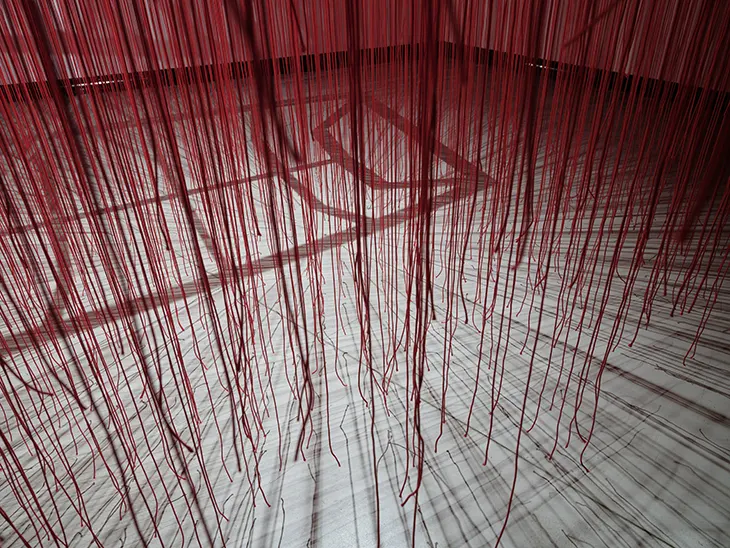
Shiota’s use of color in her threads carries deep symbolic meaning, further enhancing the emotional impact of her installations. The black threads, for example, represent the vastness of the universe, evoking ideas of infinity and the unknown. The accumulation of black threads creates a visual depth that draws viewers into a meditative state, reflecting on the mysteries of existence. In contrast, the red threads symbolize blood and life. They evoke themes of kinship and cultural heritage, suggesting the ties that bind us to one another. White threads, meanwhile, are often associated with the spiritual and the ethereal, representing purity and the intangible aspects of the human soul. Through her deliberate use of color, Shiota communicates complex ideas about the human experience, inviting viewers to interpret the threads in their own way.
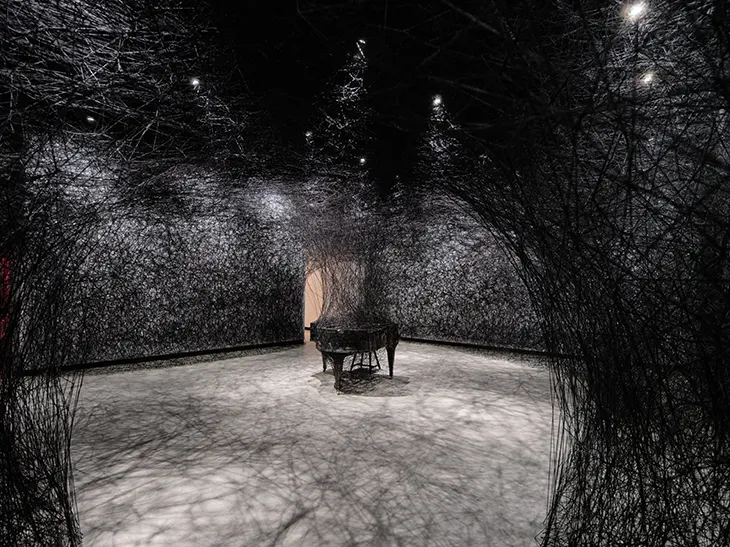
One of the most haunting pieces in “The Unsettled Soul” is an installation featuring a burnt piano. This work draws inspiration from a childhood memory of Shiota’s—watching a neighbor’s house burn down, and seeing the piano reduced to ashes. The charred remains of the piano are a symbol of loss, while the absence of sound evokes a lingering silence that speaks to the void left behind by destruction. The piano, once a vessel of music and expression, becomes an emblem of the things we lose but continue to remember. This installation captures the essence of Shiota’s artistic exploration: how absence and loss shape our understanding of existence.
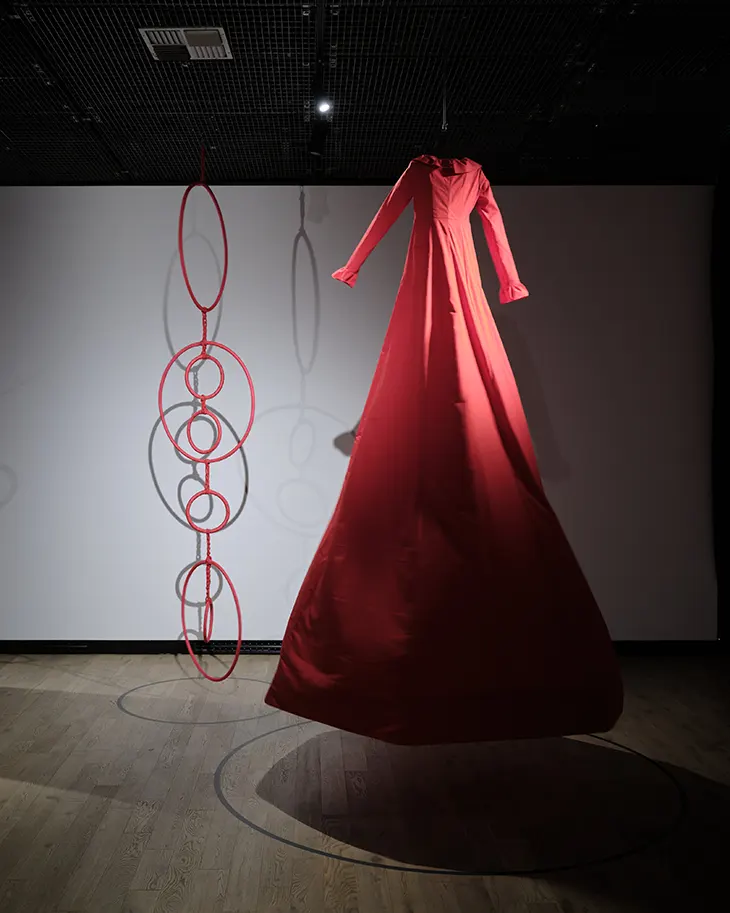
Shiota’s work also explores the idea of personal identity through the use of garments. In one installation, she uses dresses as symbols of the human body, describing them as a “second skin.” The installation features seven rotating dresses and eight suspended objects, all moving gently as if breathing. The garments evoke the presence of the human form, even in its absence, creating an eerie and poetic atmosphere. The movement of the dresses suggests a sense of life, as though they are inhabited by the spirits of those who once wore them. This exploration of the boundary between the inner self and the external world is a recurring theme in Shiota’s work, inviting viewers to consider the traces we leave behind.
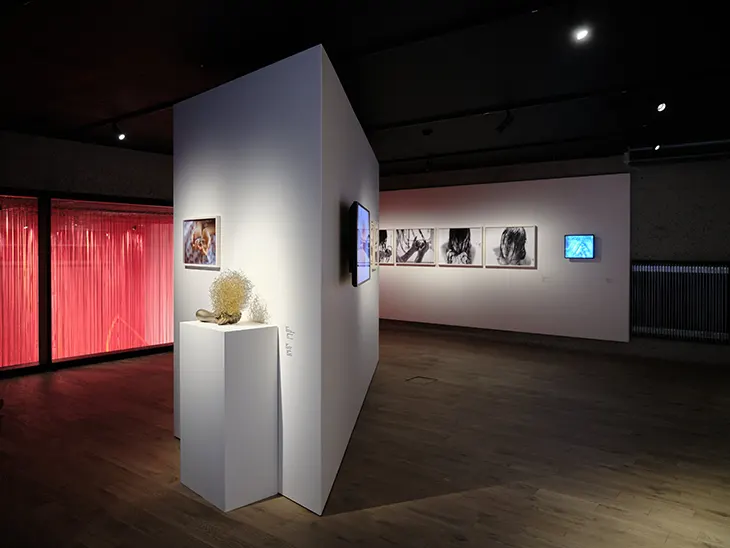
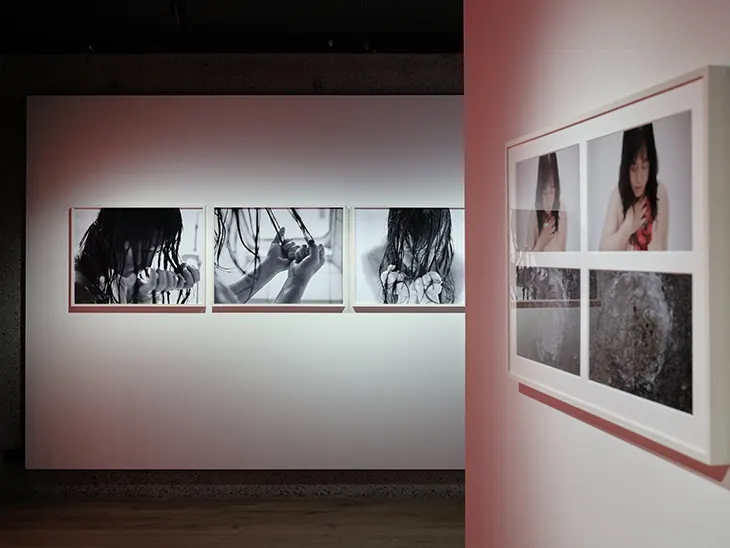
The exhibition also provides a glimpse into Shiota’s artistic evolution, from her early works in the 1990s to her more recent installations. A selection of films, archives, and a chronology of her career offers context for her creative path, allowing visitors to understand the development of her unique visual language. Shiota’s early experiments laid the foundation for her signature thread installations, which have since become a powerful means of expressing both personal and collective experiences. By incorporating everyday objects—such as pianos, dresses, and keys—into her installations, Shiota imbues her work with a sense of familiarity that resonates with viewers on a deep, emotional level.
Shiota’s threads are not simply materials; they are her medium for drawing in space, creating lines that weave together stories. She often refers to her process as “drawing in the air,” using threads as if they were lines on a canvas, only on a much larger, more immersive scale. This approach allows her to transform the gallery space into a three-dimensional artwork that envelops viewers, making them a part of the piece. Notably, the total length of the threads used in the exhibition stretches beyond the gallery space, extending up to 400 kilometers—enough to connect Prague to Berlin. This physical measurement speaks to the vastness of the connections Shiota seeks to depict, linking not only physical locations but also the cultural bonds.
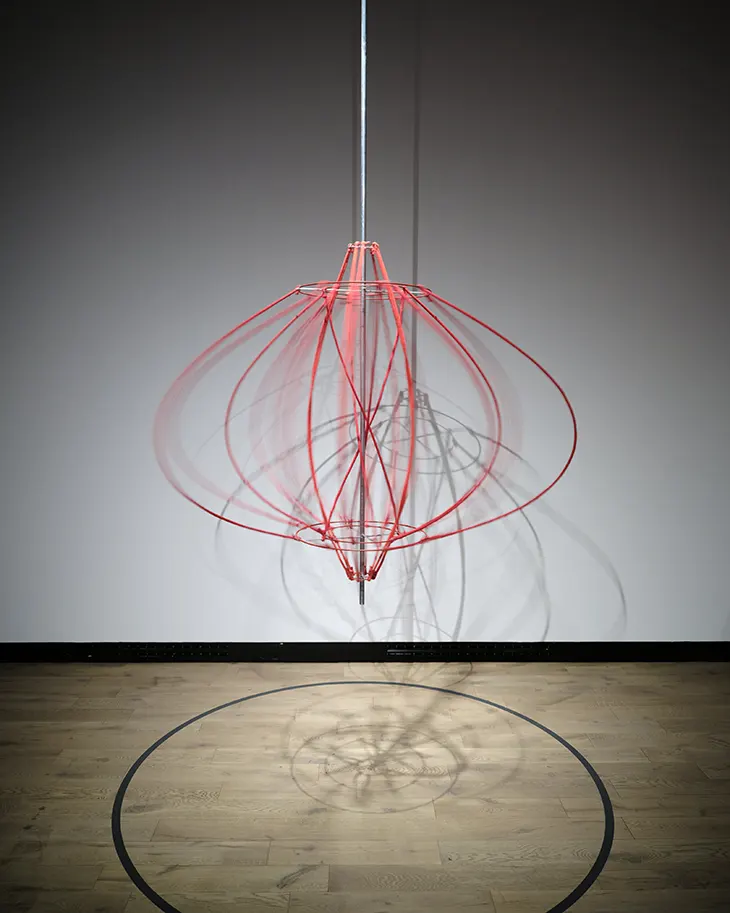
Chaos is a fundamental element in Shiota’s work, and it is evident in the seemingly erratic yet carefully crafted networks of threads that fill the gallery space. The threads, while appearing chaotic and tangled, are intentionally woven to form an intricate and cohesive structure. This interplay between chaos and order mirrors the unpredictability of life itself—the way our experiences, emotions, and relationships can often feel disordered, yet ultimately come together to create something meaningful. The chaotic nature of her installations is not meant to overwhelm but to invite viewers to find their own sense of balance and meaning within the complexity.
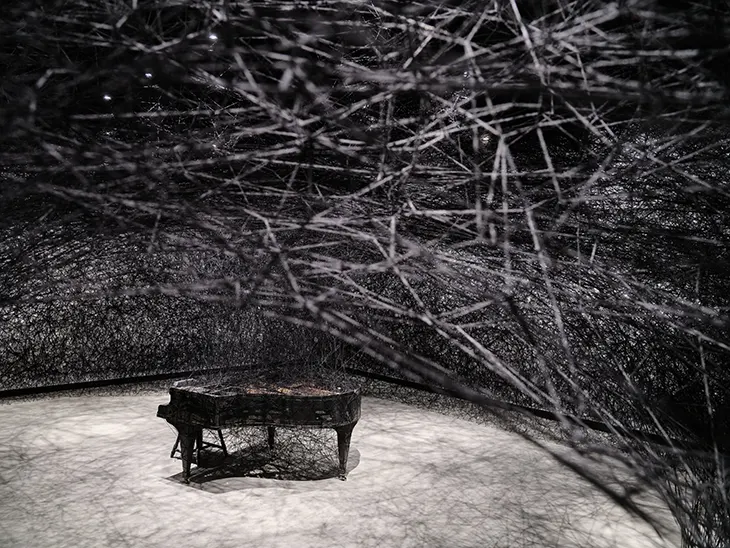
Shiota also shares a spiritual connection with Cuban artist Ana Mendieta, whose work similarly explores themes of identity, belonging, and the human connection to the natural world. Mendieta’s use of her own body in her artwork to express the relationship between the self and the environment resonates deeply with Shiota’s own explorations of presence and absence. This kinship between the two artists is evident in the way Shiota’s installations evoke a sense of the physical body, even in its absence, and how they both use their art to bridge the gap between the material and the immaterial.
The exhibition’s meditative atmosphere provides a respite from the noise of the outside world, allowing viewers to engage deeply with the themes that Shiota explores. In a world that often feels fragmented and divided, Shiota’s work is a reminder of our shared humanity, and the threads that hold us together, even in the face of uncertainty.
